Positions of Responsibility (PoR) are leadership roles that Scouts perform.
In order to advance to the rank of Star, Life, and Eagle Scout, you must hold one of the following leadership positions for a certain amount of time.
General Leadership Responsibilities
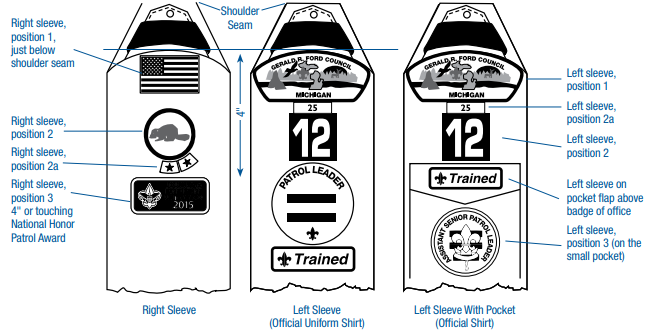
Uniform
Set the example by wearing your uniform correctly. This means that you will wear all of the parts of the troop uniform, shirt tail tucked in, with all required badges in their correct locations.
For more information see the Scouts BSA Insignia guide.
Behavior
Set the example by living the Scout Oath and Law in your everyday life. Show Scout Spirit in everything you say and do.
Attendance
Set the example by being an active Scout. Be on time for meetings and activities. You must notify the Scoutmaster if you are not going to be at a meeting or if you suddenly have to miss an outing. You also need to make sure that someone (your designated assistant, if there is one) is ready to assume your responsibilities.
Youth Leadership Roles
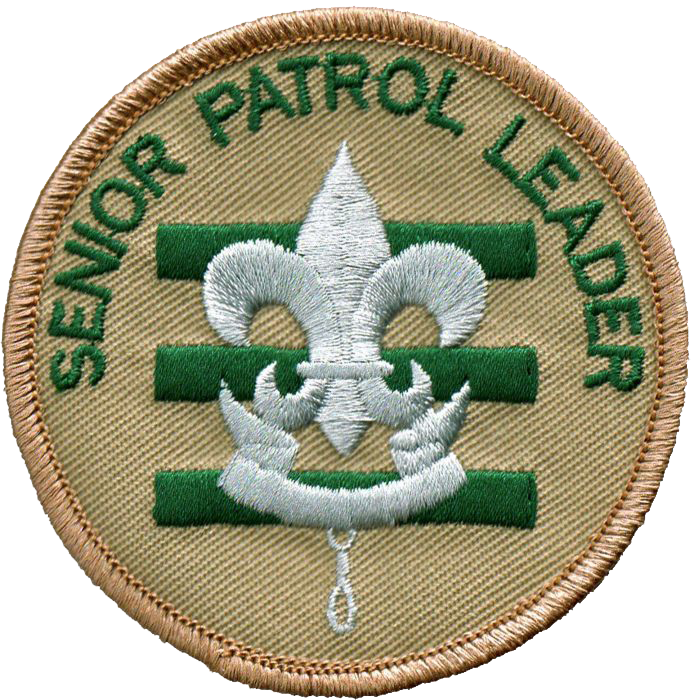
With three green bars behind the Scout emblem, the senior patrol leader’s shoulder patch symbolizes one of the oldest leadership positions in Scouting. The Boy Scouts of America has long recognized the senior patrol leader as the highest youth leadership position in a troop. They are the primary link between a troop’s Scouts and its adult leaders. They shoulder the responsibility for leading meetings of the troop and the patrol leaders’ council and provide valuable leadership in planning and carrying out the troop’s program of outdoor activities, service projects, and events.
Responsibilities
- runs all troop meetings, events, activities, and the annual program planning conference
- runs the patrol leaders’ council (PLC) meetings
- appoints other troop junior leaders with the advice and counsel of the Scoutmaster
- assigns duties and responsibilities to junior leaders
- assists the Scoutmaster with junior leader training
- sets a good example
- wears the Scout uniform correctly
- lives by the Scout Oath and Law
- shows Scout spirit
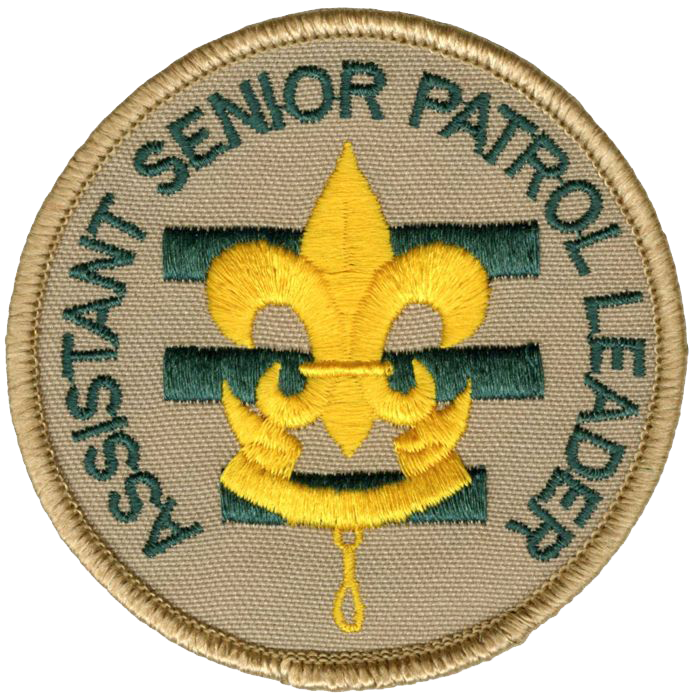
The assistant senior patrol leader is the second highest youth leadership position in the troop, working closely with the senior patrol leader to help the troop move forward. The assistant senior patrol leader acts as the senior patrol leader in the absence of the senior patrol leader or when called upon, and provides leadership to other youth leaders in the troop. The assistant senior patrol leader is appointed by the senior patrol leader under the guidance of the Scoutmaster.
Responsibilities
- helps the senior patrol leader lead meetings and activities
- runs the troop in the absence of the senior patrol leader
- helps train and supervise the troop scribe, quartermaster, instructor, librarian, historian, webmaster, chaplain aide, and OA representative
- serves as a member of the patrol leaders’ council
- sets a good example
- wears the Scout uniform correctly
- lives by the Scout Oath and Law
- shows Scout spirit
- lends a hand controlling the patrols and building patrol spirit
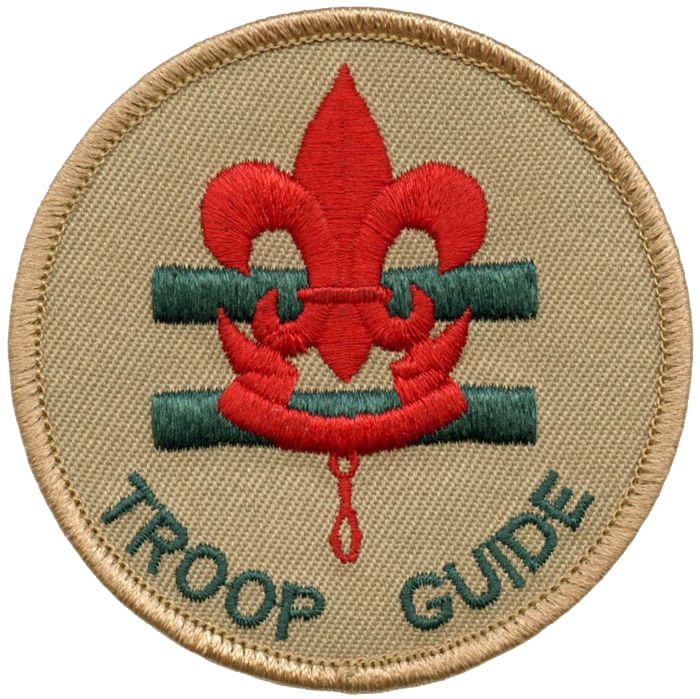
Troop guides serve as both a leader and a mentor to the members of the new-Scout patrol. They should be an older Scout who holds at least the First Class rank and can work well with younger Scouts.
The troop guide helps the patrol leader of the new-Scout patrol lead their patrol, so they can develop into a well-functioning group, working together harmoniously and productively.
Responsibilities
- introduces new Scouts to troop operations
- guides new Scouts from harassment by older Scouts
- helps new Scouts towards earning the First Class rank
- teaches basic Scout skills
- coaches the patrol leader of the new-Scout patrol on his duties
- works with the patrol leader at patrol leaders’ council meetings
- attends patrol leaders’ council meetings with the patrol leader of the new-Scout patrol
- counsels individuals Scouts on Scouting challenges
- sets a good example
- wears the Scout uniform correctly
- lives by the Scout Oath and Law
- shows Scout spirit
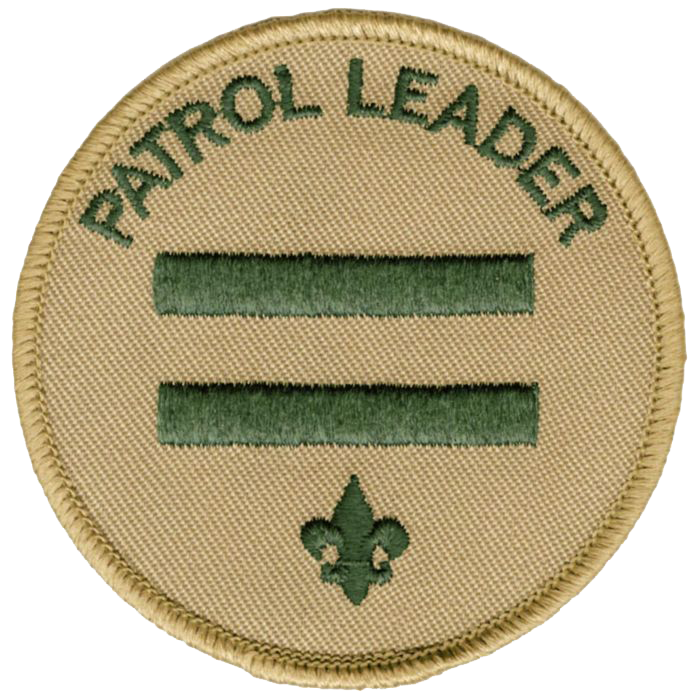
The patrol leader is the patrol’s key leader, representing the patrol at all patrol leaders’ council meetings and the annual program planning conference, and keeping patrol members informed of decisions made. Patrol leaders carry out planning, leading, and evaluating patrol meetings and activities, and assure patrols are prepared to participate in all troop activities. They keep their patrol intact so they can work together and share responsibilities to get things done. It is incumbent upon them to be a good example for the members of their patrol and the rest of the troop.
Responsibilities
- plans and leads patrol meetings and activities
- keeps patrol members informed
- assigns each patrol member a specific duty
- represents his patrol at all patrol leaders’ council meetings and the annual program planning conference
- prepares the patrol to participate in all troop activities
- works with other troop leaders to make the troop run well
- knows the abilities of each patrol member
- sets a good example
- wears the Scout uniform correctly
- lives by the Scout Oath and Law
- shows and develops patrol spirit
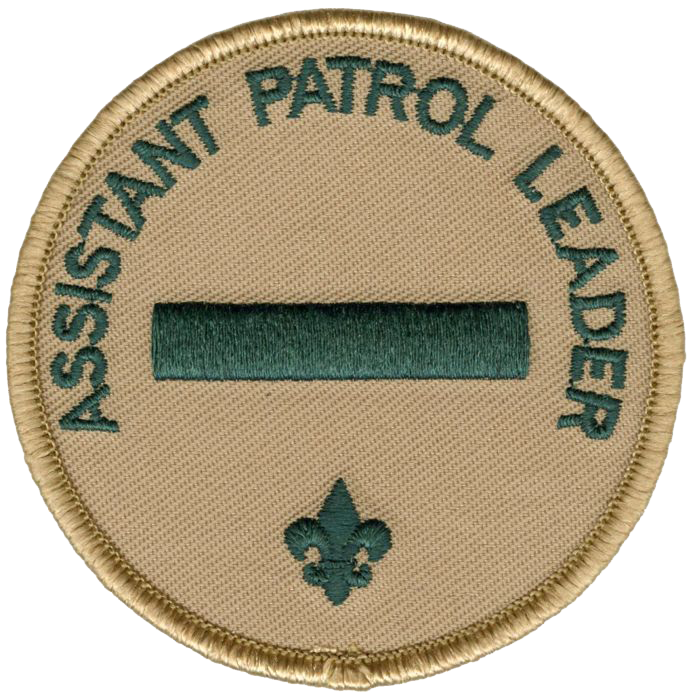
Serves in capacity of patrol leader when the patrol leader is unavailable to attend a meeting or activity.
This is not an approved position of responsibility for rank advancement.
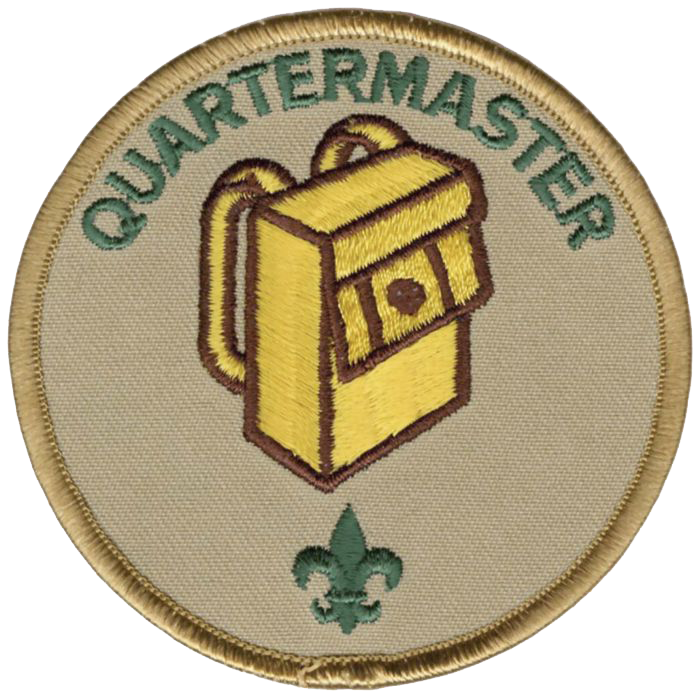
Quartermasters serve as the troop’s supply boss. They keep an inventory of troop equipment and see that the gear is in good condition. They work with patrol quartermasters as they check out equipment and return it. At meetings of the patrol leaders’ council they report on the status of equipment in need of replacement or repair. In carrying out their responsibilities, they may have the guidance of a member of the troop committee.
Responsibilities
- keeps records on patrol and troop equipment
- makes sure equipment is in good working condition
- issues equipment and makes sure it is returned in good condition
- makes suggestions for new or replacement items
- works with the troop committee member responsible for equipment
- sets a good example
- wears the Scout uniform correctly
- lives by the Scout Oath and Law
- shows Scout spirit
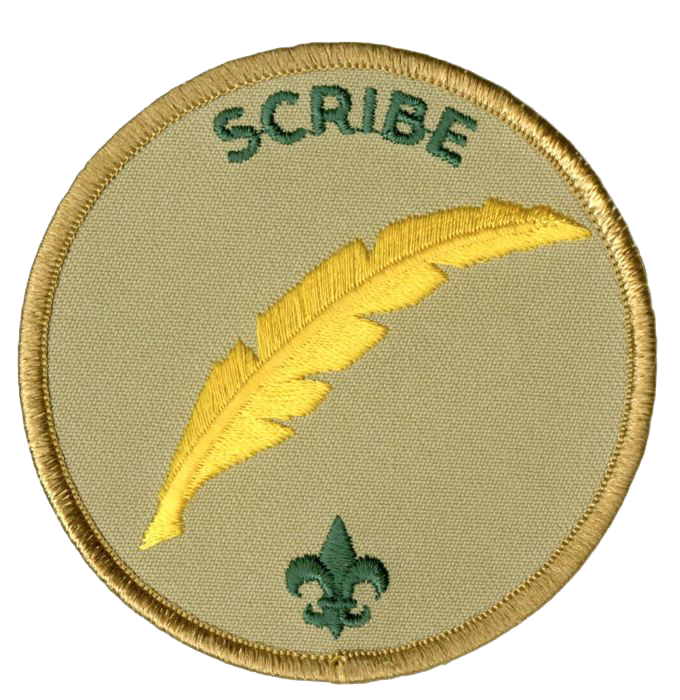
The scribe is the troop’s secretary. Though not a voting member, they attend meetings of the patrol leaders’ council and keep a record of the discussions. They cooperate with the patrol scribes to record attendance and dues payments at troop meetings and to maintain troop advancement records. The troop scribe may be assisted by a member of the troop committee.
Responsibilities
- attends and keeps a log of patrol leaders’ council meetings
- records individual Scout attendance and dues payments
- records individual Scout advancement progress
- works with the troop committee member responsible for records and finance
- sets a good example
- wears the Scout uniform correctly
- lives by the Scout Oath and Law
- shows Scout spirit
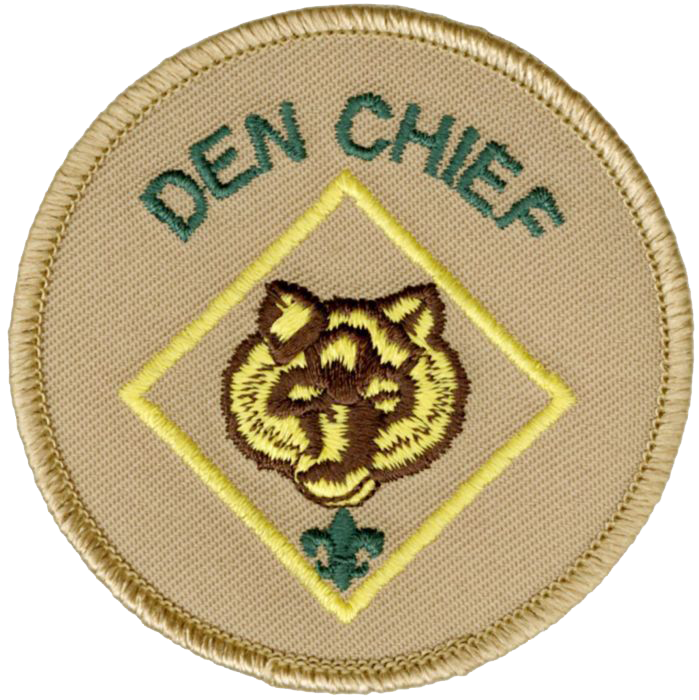
Den chiefs are Scouts who assist a Cub Scout den leader or Webelos den leader. They are selected by the senior patrol leader and Scoutmaster, and approved by the cubmaster and the pack committee for recommendation to the den leader. Den chiefs help Cub Scouts advance through Cub Scout ranks and encourage Cub Scouts to join a troop upon graduation.
Responsibilities
- knows the purposes of Cub Scouting
- helps Cub Scouts achieve the purposes of Cub Scouting
- serves as the activities assistant at den meetings
- sets a good example through attitude and uniforming
- is a friend to the members of the den
- helps lead weekly den meetings
- helps the den in its part of the monthly pack meeting.
- knows the importance of the monthly theme and pack meeting plans
- meets regularly with the den leader to review den and pack meeting plans
- meets as needed with adult members of the den, pack, and troop
- receives training from the den leader (and cubmaster or assistant cubmaster)
- takes Den Chief Training
- encourages Cub Scouts to become Webelos Scouts when they are eligible
- encourages Webelos Scouts to join a Scout troop upon graduation
- helps the denner and assistant denner to be leaders.
- wears the Scout uniform correctly
- lives by the Scout Oath and Law
- shows Scout spirit
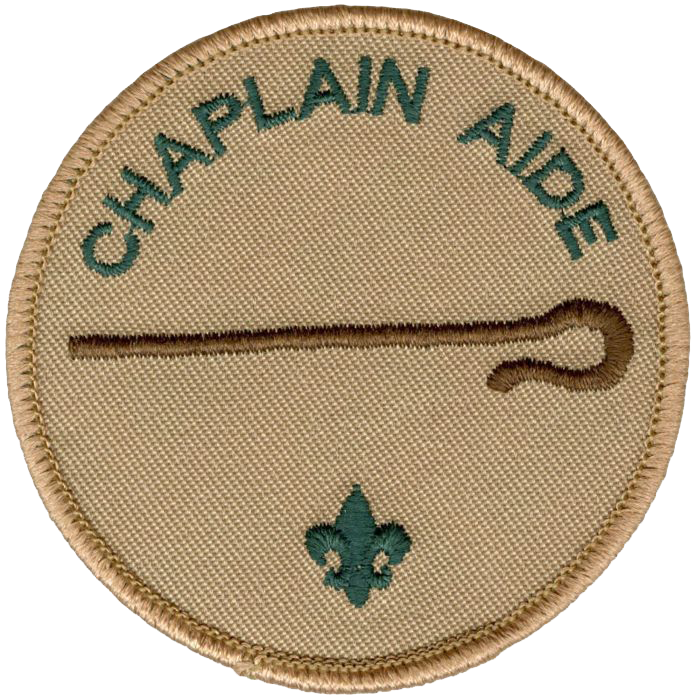
Chaplain aides assist the troop chaplain (usually an adult from the troop committee or the chartered organization) in serving the religious needs of the troop. They lead the troop in opening or closing prayer and mealtime blessings. Chaplain aides ensure that religious holidays are considered during the troop’s program planning process and promotes the BSA’s religious emblems program.
Responsibilities
- assists the troop chaplain with religious services at troop activities
- encourages troop members to strengthen their own relationships with God through personal prayer and devotion and participation in religious activities appropriate to their faith
- tells Scouts about the Religious Emblems program for their faith at least once a year
- helps recognize troop members who receive their religious emblems, (such as at a court of honor)
- makes sure religious holidays are considered during the troop program planning process
- helps plan for religious observance in troop activities
- encourages saying grace at meals while camping or at other activities
- helps promote annual Scout Sunday or Scout Sabbath
- sets a good example
- wears the Scout uniform correctly
- lives by the Scout Oath and Law
- shows Scout spirit
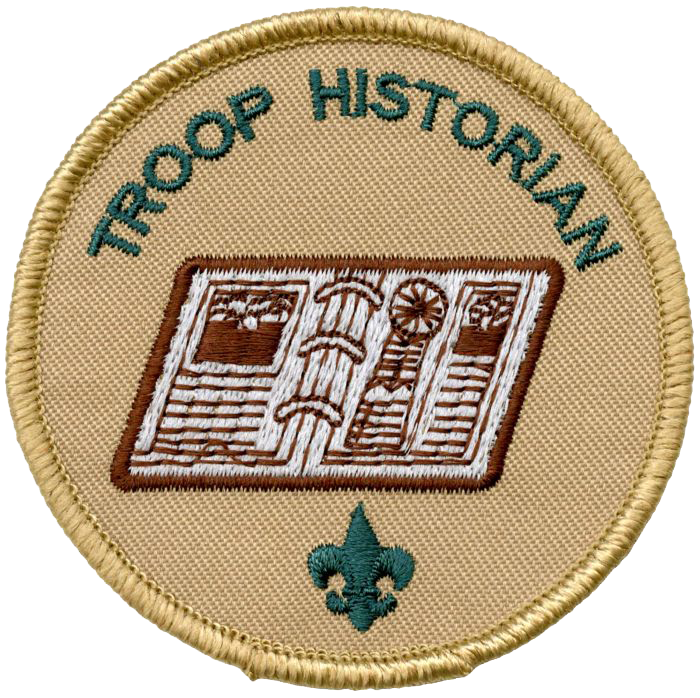
The historian collects, assembles, and preserves troop photographs, news stories, trophies, flags, scrapbooks, awards, and other memorabilia, and makes materials available for Scouting activities, courts of honor, the media, and troop history projects.
Responsibilities
- gathers photos and facts about troop activities and keeps them in a historical file or scrapbook
- takes care of troop trophies, ribbons, and souvenirs of troop activities
- keeps information about former members of the troop
- sets a good example
- wears the Scout uniform correctly
- lives by the Scout Oath and Law
- shows Scout spirit
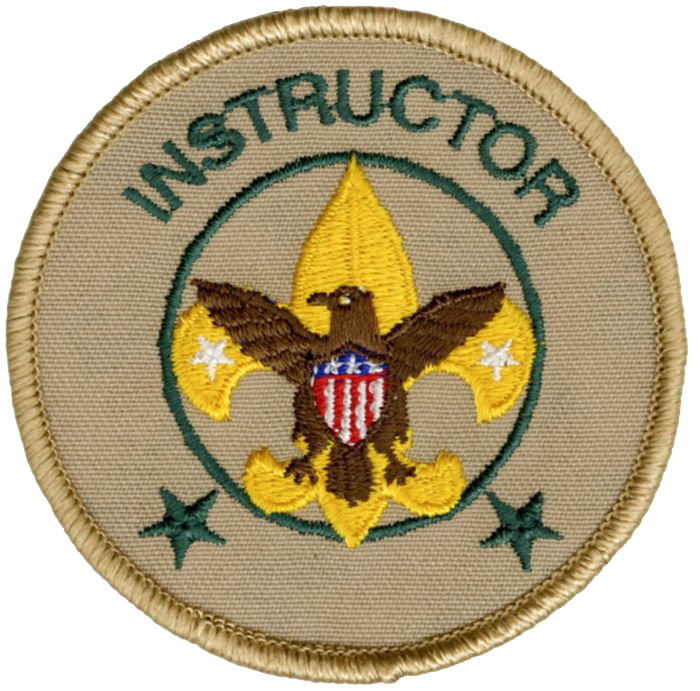
Each instructor is an older troop member proficient in a Scouting skill who must also have the ability to teach that skill to others. An instructor typically teaches subjects that Scouts are eager to learn—especially those such as first aid, camping, and backpacking—that are required for outdoor activities and rank advancement. A troop can have more than one instructor.
Responsibilities
- teaches basic Scouting skills
- schedule/coordinate merit badge counselor(s) for troop/Scout instruction
- sets a good example
- wears the Scout uniform correctly
- lives by the Scout Oath and Law
- shows Scout spirit
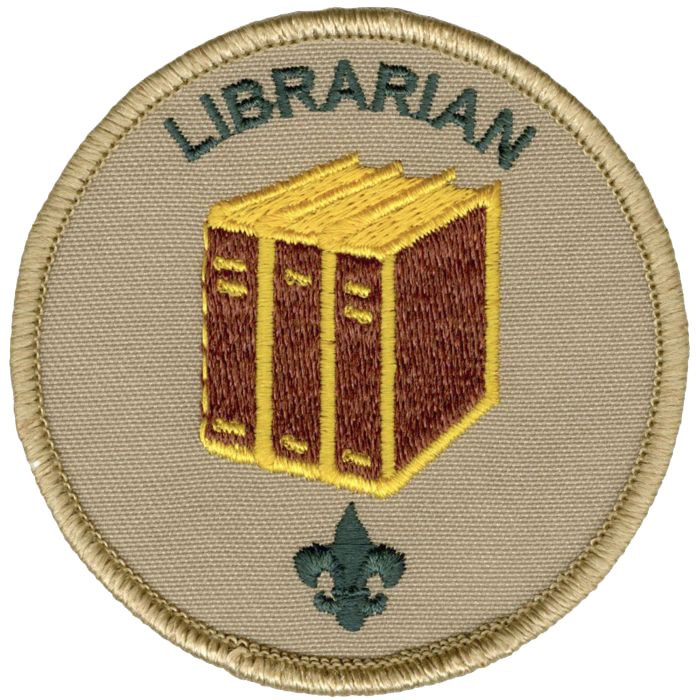
Troop librarians oversee the care and use of troop books, pamphlets, magazines, audiovisuals, and merit badge counselor lists. They check out these materials to Scouts and leaders and maintain records to ensure that everything is returned. They may also suggest the acquisition of new literature and report the need to repair or replace any current holdings.
Responsibilities
- sets up and takes care of the troop library
- keeps records of books and pamphlets owned by the troop
- adds new or replacement items as needed
- keeps books and pamphlets available for borrowing
- keeps a system for checking books and pamphlets in and out, and follows up on late returns
- sets a good example
- wears the Scout uniform correctly
- lives by the Scout Oath and Law
- shows Scout spirit
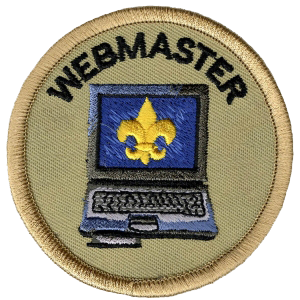
Troop webmasters are responsible for maintaining the troop’s website. They make sure that information posted on the website is correct and up to date and that the privacy of youth and adult troop members is protected. A member of the troop committee may assist them with their work.
Responsibilities
- works with various unit members on needed topics
- ensures the website is as youth-run as possible
- maintains the website as needed
- sets a good example
- correctly wears the Scout uniform correctly
- shows Scout spirit
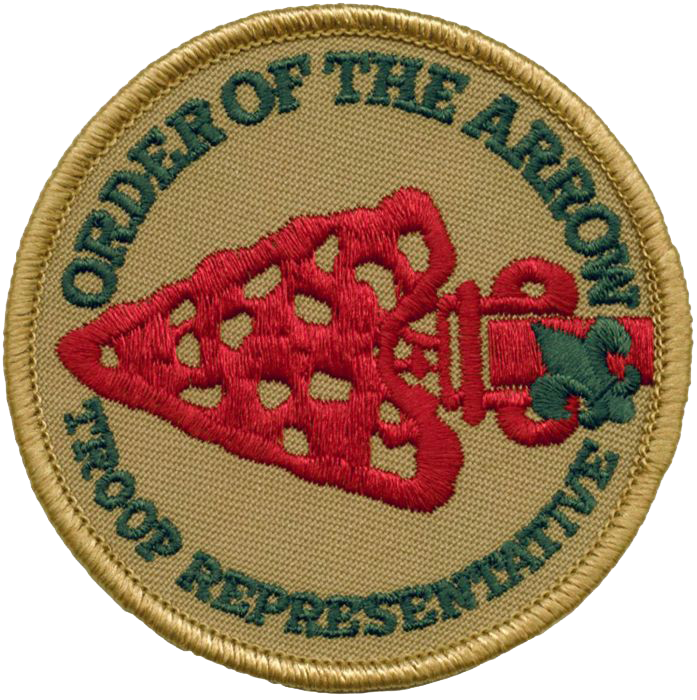
Order of the Arrow representatives serve as a communication link between the troop and the local Order of the Arrow lodge. By enhancing the image of the Order as a service arm to the troop, they promote the OA, encourage Scouts to take part in all sorts of camping opportunities, and helps pave the way for older Scouts to become involved in high-adventure programs.
Responsibilities
- attends troop, chapter and lodge meetings regularly as a youth representative of the troop and Order
- serves as a two-way communication link between the troop and the lodge or chapter
- arranges with the lodge or chapter election team to conduct an annual Order of the Arrow election for the troop at a time approved by the patrol leaders council
- arranges with the lodge or chapter for at least one camp promotion visit to the unit annually
- makes at least one high adventure presentation to the troop, to include the OA programs, annually
- participates in troop courts of honor, as requested by the senior patrol leader, by recognizing: high adventure participation of troop members, induction of new OA members, changes in OA honors of troop members, and other appropriate activities
- coordinates the ordeal induction process for newly elected candidates by: ensuring they know the time and location of the ordeal, providing information of what to bring to the ordeal, assisting (as needed) in arranging transportation to the ordeal, and offering assistance (as needed) to the lodge in the ordeal process
- assists current ordeal members in the troop in sealing their membership by becoming brotherhood members by: ensuring they know the time and location of brotherhood opportunities, assisting (as needed) in arranging transportation to the brotherhood opportunities, and offering assistance to the lodge (as needed) in the brotherhood process
- offers periodic training and discussions of OA principles, symbolism, and the Legend as needed by and appropriate for the troop members of the Order, at the discretion of the PLC
- assists the troop (as appropriate) as a trainer of leadership and outdoor skills.
- advocates environmental stewardship and Leave No Trace camping
- sets a good example by: wearing the Scout uniform correctly, showing Scout spirit, and living by the Scout Oath, the Scout law, and the OA Obligation
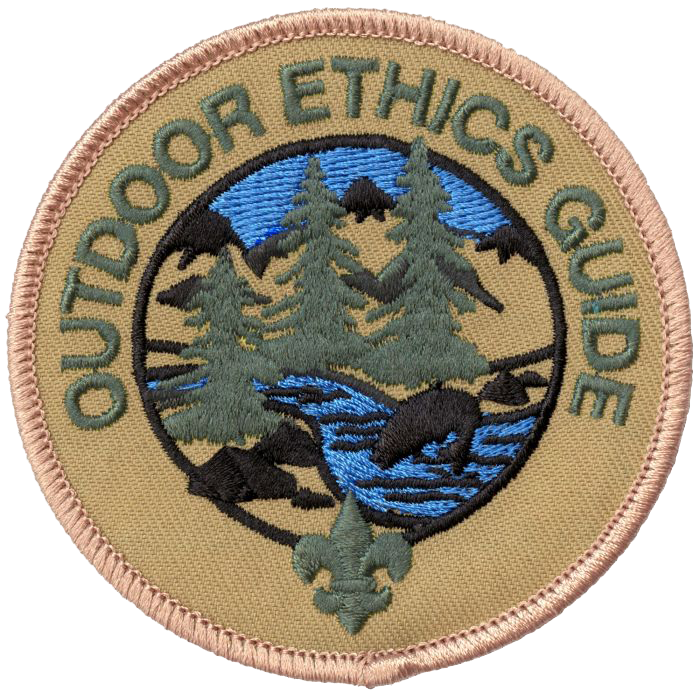
Outdoor ethics guides help troops plan and conduct an outdoor program that emphasizes effectively practicing the Outdoor Code, the Leave No Trace principles, and the Tread Lightly! principles. Guides work to help Scouts improve their outdoor ethics decision-making skills to help minimize impacts as they hike, camp, and participate in other outdoor activities. In particular, they should support Scouts who are working to complete the relevant requirements for the Tenderfoot, Second Class, and First Class ranks.
Responsibilities
- assures the troop adheres to the Principles of Leave No Trace, Tread Lightly, and the Outdoor Code
- sets a good example
- wears the Scout uniform correctly
- lives by the Scout Oath and Law
- shows Scout spirit
Outdoor Ethics and the BSA
Outdoor Ethics Guide Handbook
Outdoor Ethics Website
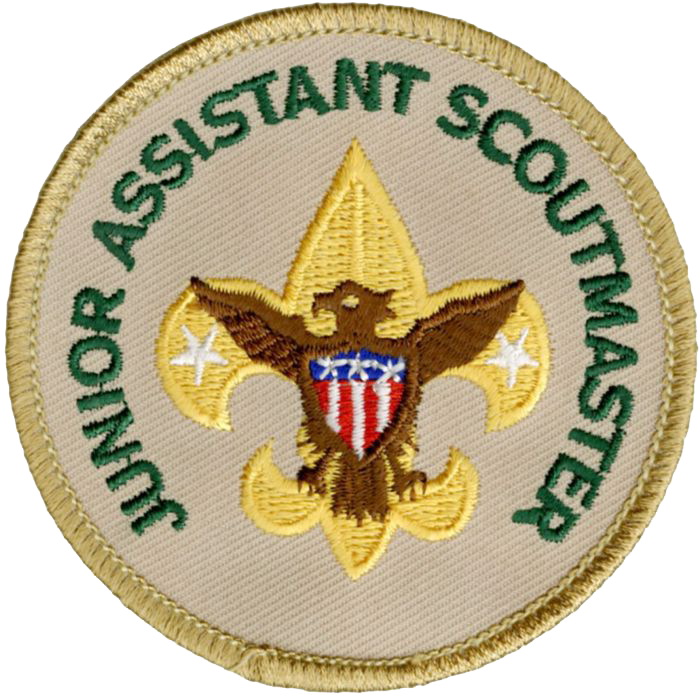
A Scout at least 16 years of age who has shown outstanding leadership skills may be appointed by the Scoutmaster to serve as a junior assistant Scoutmaster (JASM). The junior assistant Scoutmaster functions just like an assistant Scoutmaster (except for leadership responsibilities reserved for adults 18 years of age or older). In this capacity, junior assistant Scoutmasters (a troop may have more than one) follow the guidance of the Scoutmaster in providing support and supervision to other youth leaders in the troop. Upon their 18th birthday, a junior assistant Scoutmaster will be eligible to become an assistant Scoutmaster.
Responsibilities
- performs duties as assigned by the Scoutmaster.
- sets a good example.
- wears the Scout uniform correctly
- lives by the Scout Oath and Law.
- shows Scout spirit
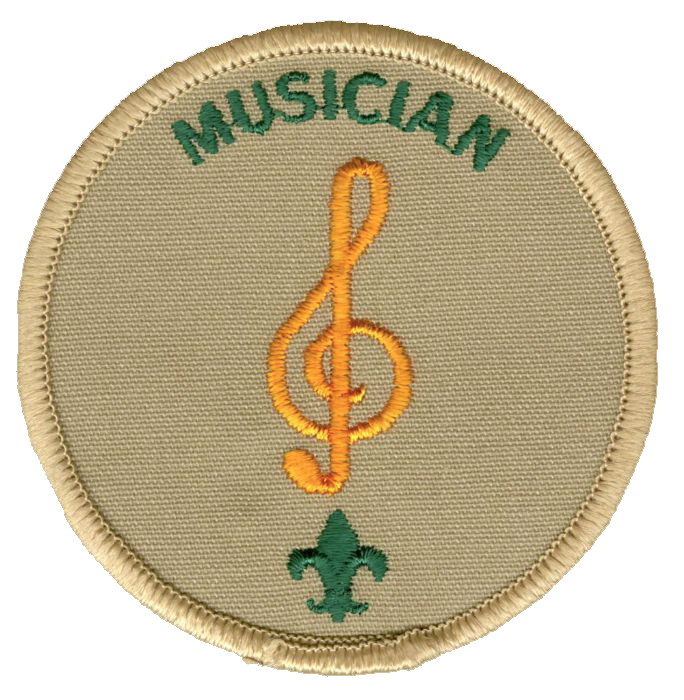
Scouts or Venturers who are members of bands, drill teams, or drum and bugle corps affiliated with a unit or a local council may also wear the musician badge special insignia.
This is not an approved position of responsibility for rank advancement.
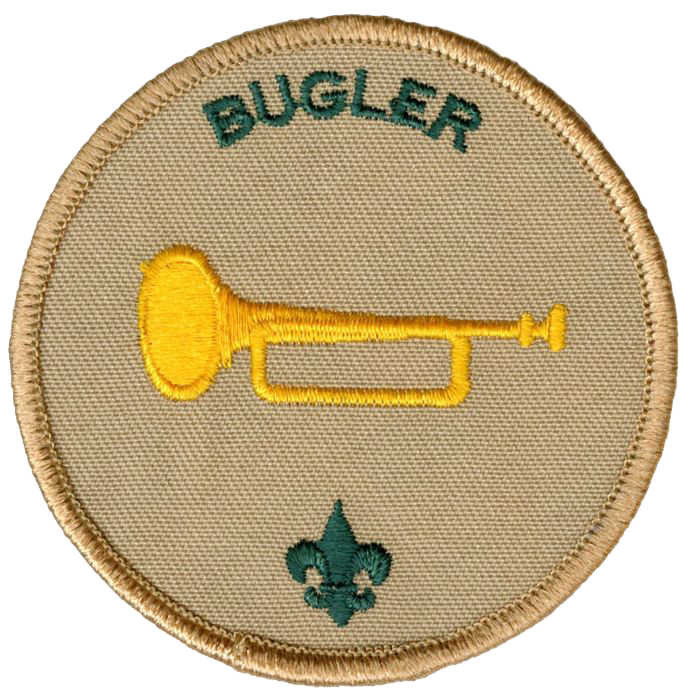
The bugler plays the bugle (or a similar interest) to mark key moments during the day on troop outings, such as reveille and lights out. He must know the required bugle calls and should ideally have earned the Bugling merit badge.
While acceptable for the Star and Life ranks, Bugler is not an approved position of responsibility for the Eagle Scout rank.
What are the position of responsibility requirements?
- Scout, Tenderfoot, Second Class and First Class: No position of responsibility requirements
- Star requirement 5: While a First Class Scout, a young man must serve actively for four months in one or more of the acceptable positions of responsibility listed in the next section. (Or he may carry out a Scoutmaster-approved leadership project to help the troop.)
- Life requirement 5: While a Star Scout, a young man must serve actively for six months in one or more of the acceptable positions of responsibility listed in the next section. (Or he may carry out a Scoutmaster-approved leadership project to help the troop.)
- Eagle Scout requirement 4: While a Life Scout, a young man must serve actively for six months in one or more of the acceptable positions of responsibility listed in the next section. (The Scoutmaster-approved leadership project is not an option for Eagle.)


